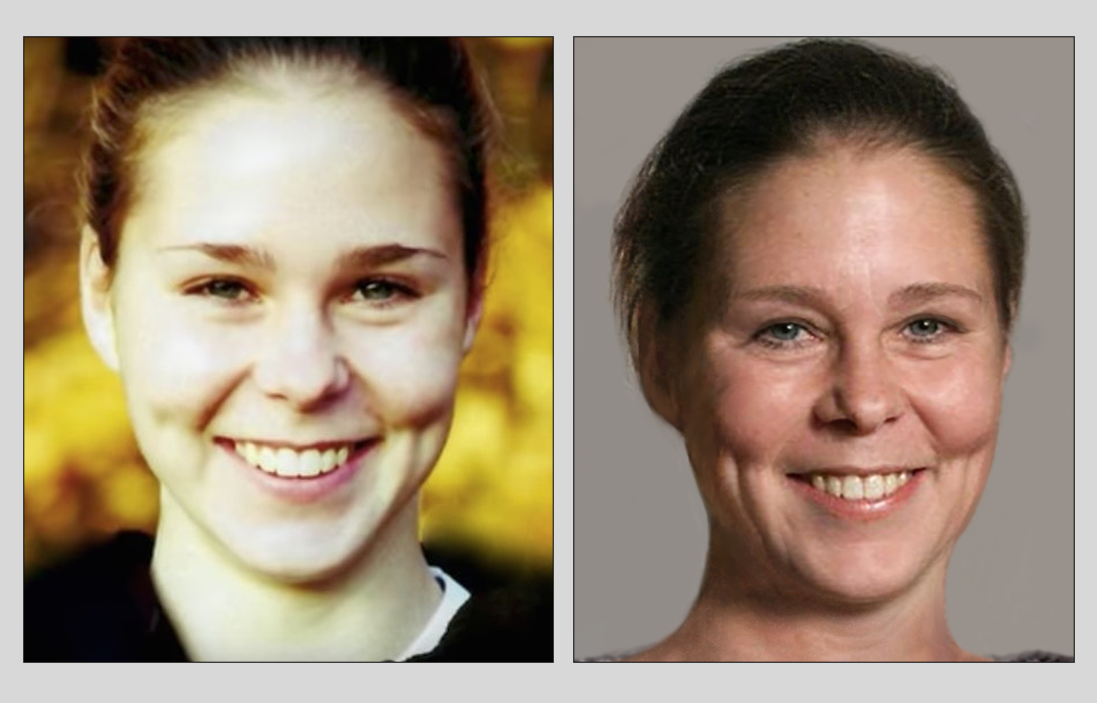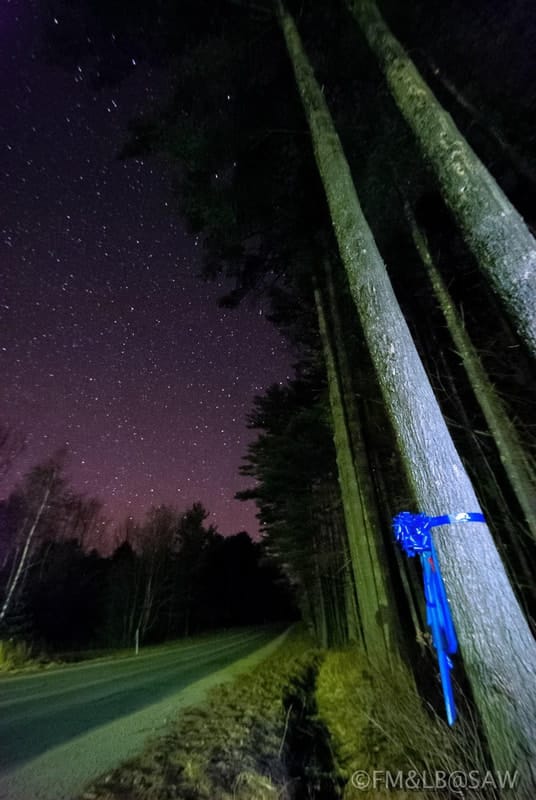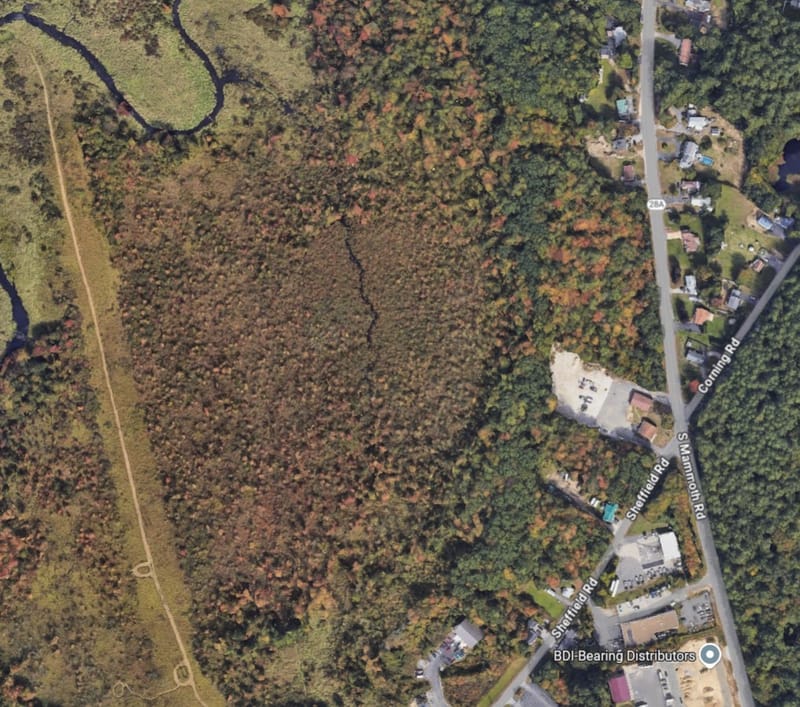Maura Murray age progression photo released on 20th anniversary of disappearance
An age-progression photo of missing Massachusetts college student Maura Murray has been released by the New Hampshire Cold Case unit in recognition of the 20th anniversary of her disappearance after a car accident in North Haverhill.


CONCORD, NH – An age-progression photo of missing Massachusetts college student Maura Murray has been released by the New Hampshire Cold Case unit in recognition of the 20th anniversary of her disappearance after a car accident in North Haverhill.
Attorney General John M. Formella announced Thursday that New Hampshire investigators hope to generate new leads and “helpful tip information” for the ongoing investigation into Murray’s Feb. 9, 2004, disappearance.
“We are continuing to work with our local, state, and federal partners, including the FBI, to identify resources to try to advance this case,” Formella said in a news release. “It is our hope that this 20th anniversary of Ms. Murray’s disappearance will bring renewed attention to the case that might ultimately lead to justice and closure for the Murray family.”
The photograph represents an FBI analysis and projection of what Murray might look like in 2024, according to Formella’s office. She was 21 when she disappeared from the scene of a one-car accident on Route 112.
The age progression photograph was produced by the FBI, which two years ago added her to its Violent Criminal Apprehension Profile list. Formella said the age-progression photo is being issued “to reinforce ongoing investigative efforts” in the investigation of Murray’s disappearance, but “is not based on a change in the investigative posture of this case or new information.”
The news release said that because of the ongoing investigation, no other information would be released. It asked that anyone with information about Murray call the New Hampshire Cold Case Unit at 603.271.2663 or email ColdCaseUnit@dos.nh.gov.
The ongoing mystery of Maura Murray
Murray was a nursing student at the University of Massachusetts, in Amherst, Mass., when she left campus in her black Saturn four-door sedan, apparently on a spontaneous getaway to New Hampshire, where she’d often vacationed with her family. Her accident happened within a two- to three-hour drive from her UMass dorm.
Her car apparently went off the road into a snowbank after a sharp turn right after the intersection of Route 112 with Old Peters Road.
In the 20 minutes between when she declined help from someone driving by, telling them she had called AAA, and when a Grafton County Sheriff Department deputy arrived, she was gone, taking her backpack and leaving her locked car, damaged from the crash. There is no record of her having called AAA, or anyone else, for help after the accident.
She was last seen before the accident on surveillance footage earlier that day at an ATM, wearing a dark jacket and jeans.
Extensive investigation by local and state law enforcement in the years since have turned up scant information about what may have happened to her, and her disappearance turned into an internet true crime sensation. Over the years theories among bloggers, podcasters and amateur web sleuths have ranged widely and wildly, fueled by the fact that she hadn’t confided in anyone when she left her dorm that she was going away.
Murray, a native of Hanson, Mass., called vacation accommodations in Vermont before she left on Feb. 9, 2004, and also called about a condominium rental in Bartlett, an area she’d spent a lot of time with her family. She didn’t make any reservations, though.
Her father, Fred Murray, told WMUR in 2014 that he was sure his daughter was on her way to Bartlett, which would have taken her along Route 112. “She knows it like her backyard,” he said. “We were in New Hampshire so much, at least four times a year. She was up there every year of her life.”
Her sister, Julie Murray, who is the family’s official spokesperson, reiterated in TV interviews in January 2022 that her family believes Maura was looking for a break, to get away briefly from her stressful life as a nursing student. She’d brought textbooks and schoolwork with her on the trip. The family over the years has rejected the theory that Murray died by suicide, and law enforcement has said if that had happened, her body likely would’ve been found.
After extensive searches of the woods near where Murray left her car turned up no clues, the most logical theory is that she was picked up by a predator, either a local person or someone driving through.

FBI involvement in Murray’s disappearance
The attorney general’s office has been investigating Murray’s disappearance since shortly after it happened.
“We don’t know if Maura is a victim, but the state is treating it as a potential homicide,” Jeff Strelzin, assistant AG, told Nancy West, of the New Hampshire Union Leader, in 2007. “It may be a missing-persons case, but it’s being handled as a criminal investigation.”
Her disappearance was officially labeled as “suspicious” and was added to the state’s cold case investigations unit in 2009.
The FBI was briefly involved shortly after Murray disappeared, interviewing people in Massachusetts who knew her. The agency’s next involvement was to add her to the ViCAP database two years ago.
ViCAP’s purpose is to share information with law enforcement across the country to track and apprehend “violent serial offenders,” according to the U.S. Department of Justice. Local law enforcement agencies voluntarily add information, including to the three victim categories: missing persons, victims of homicides and sexual assaults, and unidentified persons.
“[ViCAP] is simply another investigative avenue being used in the case,” Strelzin told Ink Link at the time. “Like all investigative avenues, the hope is that it may lead to useful information in the case.”
The purpose of ViCAP is to largely help find people who may be victims of a crime as well as find patterns that will lead to nailing down serial criminals. The U.S. Department of Justice website explains that crime analysts, specially trained to study the database with the goal of identifying serial offenders, “have developed timelines on potential highway serial killer suspects.”
Law enforcement agencies nationwide have been asked to forward information about cases meeting “highway serial killings criteria,” including kidnapped or missing persons whose last known location was along a highway. ViCAP was created as part of the FBI’s Highway Serial Killer Initiative, but has expanded since.
In the two years since Murray was added to the database, little information has been released publicly as to whether it’s generated any leads in the case. The last time the investigation made news was in July 2022, when an area off Route 112 in Landaff/Easton was searched, but nothing was found.





